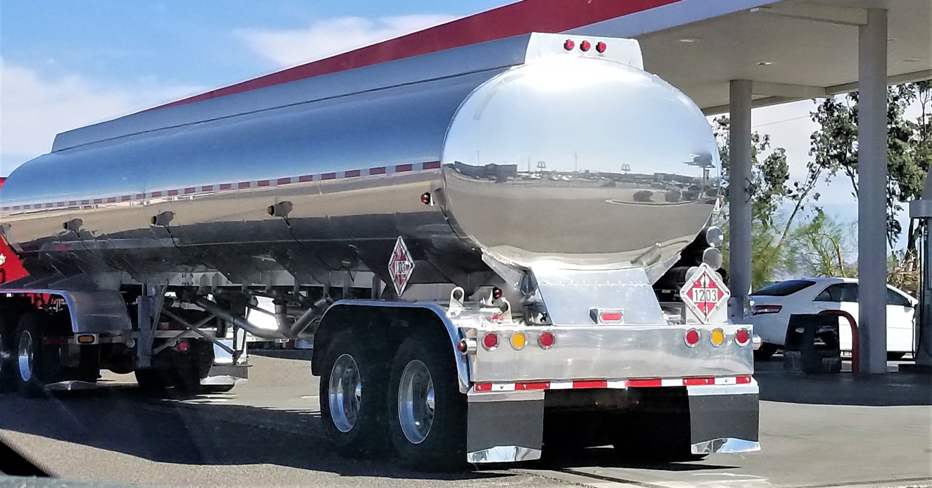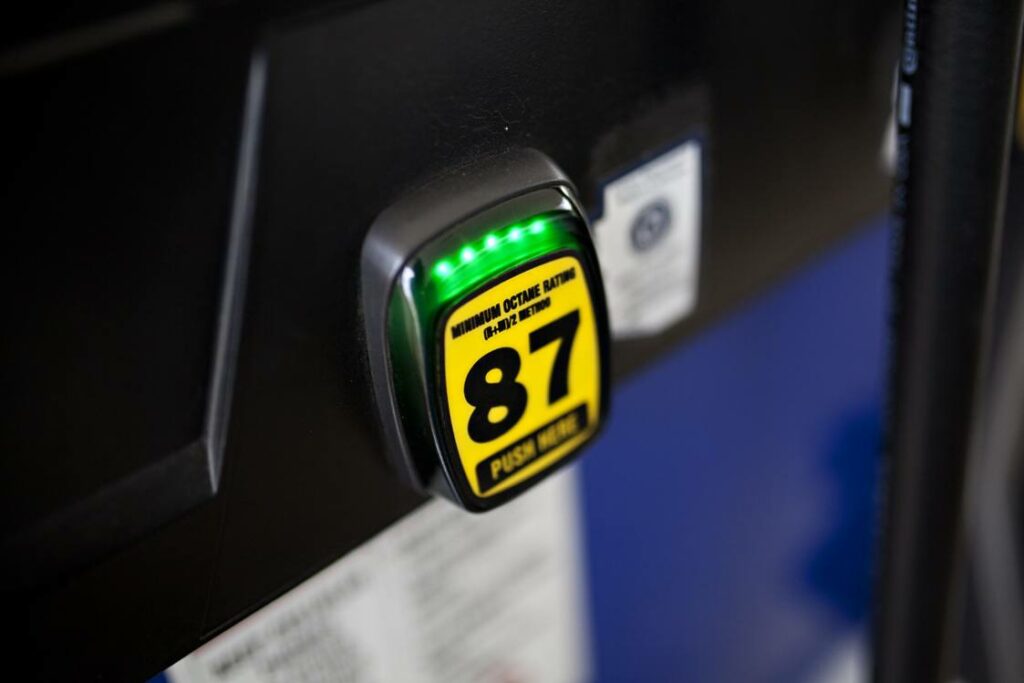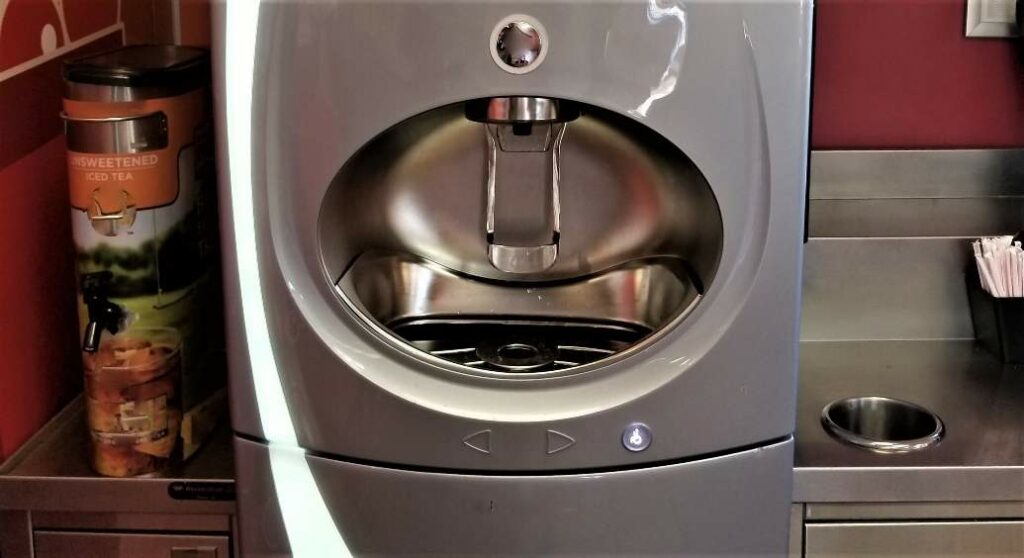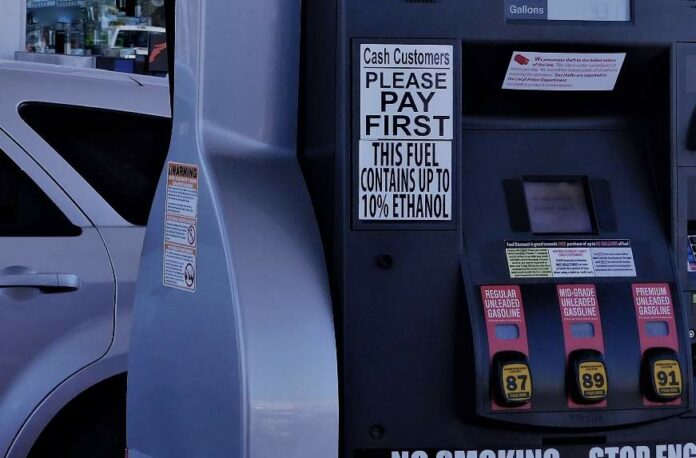As of late February, the national average for regular gas rose to $2.71 per gallon, which marks an increase of $0.46 per gallon since the beginning of the year. Although the recent rise in gas prices is significantly greater when compared to the prices in the prime quarantine time of mid-April 2020, AAA states that the rise is on par with gas price averages from April 2019. In spite of this, whenever there is an increase in gas prices, consumers are on the lookout for an opportunity to save money at the pump and this is a custom people have been doing for a very long time.
Throughout my years, I have always noticed consumers strategizing to maximize their savings at the pump. For example, when I was younger, I remember seeing people lining up at gas stations that offered inexpensive gas options. I can also recall people driving across town for that one inexpensive gas station in hopes of saving a few dollars, including my mom who was on a strict budget as a single mother. When our budget was particularly tight, we would also fill up during the week instead of the weekend, since gas prices would seemingly tend to rise come Friday.
While gas prices are not as outrageous as they were in 2008, we can still see people trying to save money at the pump, including lining up for inexpensive gas options. This is a common practice in member-only places like Costco or Sam’s Club. These retailers provide their members discounted rates for gas and according to a convenience store industry trade publication, CSP, Costco’s gas prices are an average of 20 cents per gallon less than other gas stations. Even though these member-only stores charge their customers an annual fee to use their pumps and shop at their stores, their annual memberships may pay for themselves with these savings.
Saving money at the pump today is said to be a little easier than driving around looking for that low-cost gas station with the support of apps. Online apps such as GasBuddy, Waze, and Gas Guru help people find local gas stations and provide up-to-date gas prices.
With all this said, finding a good deal and discount is always a good idea, especially when times are tough, but today we will explore whether any of these efforts are actually worth it. After all, when we spend too much time and energy searching for an ideal gas station or waste precious gas traveling to distant locations, bargain hunting can suddenly become excruciatingly expensive.
Gas Price Overview
Retail gas prices not only vary from state to state, but they also vary from station to station. For the most part, however, most gas station prices are consistent. According to the U.S. Energy Information Administration, factors that could influence the price of gas include factors such as state and local taxes, the distance from the supply, retail competition, supply disruptions, and operating costs.

California’s Gas Prices – Gas prices in the State of California are typically higher and they vary in price more than other states because there is relatively less supply for the state’s unique blend of gas. The State of California uses a reformulated gas program, and it is even more strict than the one used by the federal government. Aside from this cleaner fuel, California imposes higher taxes on gas than most states.
Refineries in the state have to run at an almost full capacity in order to meet gas demands, but when one or more of its refineries undergo issues in operation, state gas prices can significantly increase.
How Gas is Generally Priced
Throughout the nation, gas is sold based on octane levels in the primary grades: premium, midgrade, and regular. Octane levels of gas refer to the gasoline’s resistance to combustion. Gas that has a higher octane level has a lessened propensity to detonate or pre-ignite. Generally, refiners will charge more for a higher octane fuel, which makes premium-grade gas the most expensive. When calculating the retail price of gas, the cost of the crude oil, refining costs and profits, taxes, and distribution and marketing will all play a role. You can also see auto gas/energy cost by state here.

World Events Can Affect Gas Prices – Many Americans tend to believe that presidential policies can affect the price per gallon of gas. Instead of policymaking, however, there are external forces that can affect supply and demand as it relates to oil prices, which is the single biggest indicator in the price of a gallon of gasoline.
In the past, there have been major events that reshaped the gas supply and demand equation, such as the 9/11 attacks, the war in Iraq, Hurricane Katrina, and the Saudi Arabia-Russia oil price war. Most recently, the pandemic had a significant effect on the prices of petroleum products.
According to an article published in the U.S. Bureau of Labor Statistics Monthly Labor Review in October 2020, the COVID-19 pandemic contributed to large fluctuations in the prices for all refined petroleum products during the first half of 2020. The worldwide pandemic caused crude oil prices to fall precipitously in March and April 2020. With the rise in supply in combination with the fall in demand and diminishing storage space, the price of crude petroleum plunged. Based on reports, imports of crude petroleum fell close to 63 percent from January 2020 to April 2020. By the month of May, however, as many parts of the world began to partially reopen, the demand for petroleum was headed for a rebound. Consequently, crude petroleum prices began to rise quickly again. In May, the production price for crude petroleum rose to nearly 36 percent before jumping to 74 percent in the month of June. By July, world petroleum supplies had somewhat recovered.
Gas Stations Profit From More Than Just Fuel
Although gas prices may seem high from time to time, gas is not always the biggest moneymaker in a gas station. Since there are many different components that affect the retail price of gasoline, gas station retailers will usually make a profit from selling other goods besides gas. According to NPR, when gas prices are low, gas stations can typically make a higher profit from selling bottles of water. To some gas station owners, water is sometimes more profitable than gasoline.

Can You Actually Save Money at the Pump?
Most octanes will vary slightly with a price difference of around $0.10 or so. Generally, however, premium-grade gasoline costs more than midgrade, which costs more than regular gas. For the mass population, using premium-grade gas is a preference and we assume you are not putting low-grade gas in your car. Therefore, our priority is to speak on gas stations that offer top-tier gas – Shell, Chevron, Mobil, etc. If you want to save money on gas purchases, you will need to effectively strategize in order to maximize your savings.

According to multiple reports, when it comes to saving money at the pump, pinpointing where you will fill up gas for your ride is key. Aside from just seeing what the current price is at the gas station, you should know your fuel tank capacity. This will give you a better estimate, which is the cost per tank. For example, the average sedan can hold about 12 gallons worth of gas. On the other hand, larger vehicles can hold an average of 16 gallons worth of gas. If gas prices are currently $3.47 for premium, the cost to fill the average-sized sedan is $41.64. For larger vehicles that hold 16 gallons, the cost to fill up the tank would be $55.52. Depending on your daily commute, the price you pay at the pump can leave a significant dent in your wallet. When filling up once a week over the course of a year, a 12-gallon gas tank can cost upwards of $500. For larger vehicles, more than $668.
With all this considered, now if we take a look at your local high priced station (a current average of $4.16 for mid-grade in California) and then compare to your lowest local station (a state average of $3.98 for regular) we can see the difference per gallon is only $0.18. We can now apply this difference to your cost per tank/fill. We will use 16 gallons here since it is a common tank size for import vehicles. The least expensive gas is $0.18 per gallon cheaper. In calculating the savings by the number of gallons needed to fill, ( $0.18 x 16 gallons), the savings would be $2.88 and we can see here that we’re just talking about a few dollars.
Now when factoring in your average daily drive with a commute, then you might be on the high side of gas consumption at 6 fills per month, which is still less than $18/month difference between the cheaper station. If you are a weekend warrior, then you might only be at 2 fills per month which is about $5 per month.
At this point, I’ve already written off hunting for an inexpensive gas station, but the naysayers will say “calculate that over a year and it’s massive savings”.
Even that, however, the average savings will only be less than $200, which I believe there are over a million other ways to effectively save money than driving around town in search of cheap gas. If any of you are still interested in driving around town to get your best deal and boast about it on the interwebs we can go further…
Converting MPG Into Cost Per Mile
With the aforementioned information, we assume a direct savings of $5 a month, but it is important to note that these savings do not account for CPA. For those who are not in marketing or business, CPA refers to the cost per acquisition. CPA is typically used in business for determining how much a business spends to acquire a new customer. Here, we will use the CPA term for how much it costs you to acquire your gas.
By using your car’s GPS, a cell phone app, or even your computer, you easily find your average Miles per Gallon (MPGs). You can also calculate your vehicle’s MPGs by filling up your gasoline tank all the way and resetting your trip odometer. Allow your gas to deplete to at least half your tank and proceed to refill your tank once again. Make a note of the amount of gas it took you to refill the tank and record the elapsed miles. Once you have the new odometer mileage, you can subtract the original odometer reading from your new one. Finally, divide the miles you have traveled from the number of gallons it took you to refill your tank. This result will provide you with your vehicle’s average MPG for the given driving period.

You can also lookup your car’s MPGs online, but be mindful that the rate provided online will typically be higher because posted ratings are usually for Sunday drivers, not pedal mashers like the rest of us but hey, at least it’s a number. Once you have the rate, now you will be able to determine how much a mile costs you to drive. When your car gets 15mpg and you spend an average of $3 per gallon, you will pay about $0.20 to drive a mile.
When looking to save money at the pump, the real question now is how far is that cheap gas station from you? Let’s calculate your savings if you are driving 4 miles to fill your tank. Let’s assume you fill your tank up 2 times a month, which means you go 4 miles out and back twice per month. Multiply the 16 miles you travel by $0.20 plus $3.20. Now take your total savings of $5 minus your CPA of $3.20, which totals an actual savings of $1.80. If you’re looking for yearly savings…
multiply this figure by 12 and that’s roughly $20 a year.
The aforementioned information is also assuming you get 15MPGs, which the average vehicle does not. Not to mention, the back and forth traveling also increases greenhouse gases in the atmosphere.
Effective Ways to Save Money When Filling Up Your Gas Tank
To really save money at the pump, look into reward programs, such as grocery store perks programs or gas station reward programs. You can also get a good credit card that offers a percentage off the price per gallon of fuel or allows you to accumulate points for your gas purchases. When choosing the best card for you, however, be mindful of the card’s annual fees, membership requirements, and reward caps.

Another quick saving tip is to carry cash with you whenever you go to the gas station to fill up the tank. Many gas stations offer gas discounts to customers who pay for their fuel purchases using cash. They do this to avoid the fees typically charged by major credit card companies.
As previously mentioned, you can also use a Costco or Sam’s Club membership to save money on gas, that is, if you don’t mind the trade-offs. Generally, to use the gas pumps at these retailers, you will need to pay membership fees, which average $60. Also, you usually have to wait very long lines in order to fill up your tank. While these retailers are usually out of the way for most commuters, it is nice to save money on gas when already in the area.
Finally, make sure you are being a responsible car owner – maintain your vehicle. Keep your tires properly inflated, get your engine tuned up, use the right motor oil, check and change your air filter, and don’t carry excessive weight in your car. Regardless of what type of vehicle you drive, having good driving habits can help contribute to a better fuel economy, which will not only save you money but will help the planet as well.
Save Your Time, Energy, and Conserve Your Gas
To conclude, in an ideal situation, yes, it could be less expensive to fill up a tank at low-rate, cheap gas stations. Overall, however, the amount of money you believe you save is not that great. No matter what you save on filling up your gas tank, you’re talking about a very small amount per fill. By driving around looking for less expensive gas, you not only waste your time, you will also burn your gas in the process. Quite frankly, driving a few miles for inexpensive gas is not worth it. In the best-case scenario, even if you reach optimum savings, you will still be using your gas to get to your favored gas station. When traveling long distances, the money you have saved will only continue to drop and the time and energy you have invested will only continue to grow.
The bottom line is – stop wasting your time driving around looking for a low-cost gas station. Instead, focus your attention in saving money and resources elsewhere. You’ll probably have better luck saving money inside the grocery store as opposed to the gas station.
The next time you hear someone talking about a great deal they got on their gas purchase, send them over to this article for some learning.








